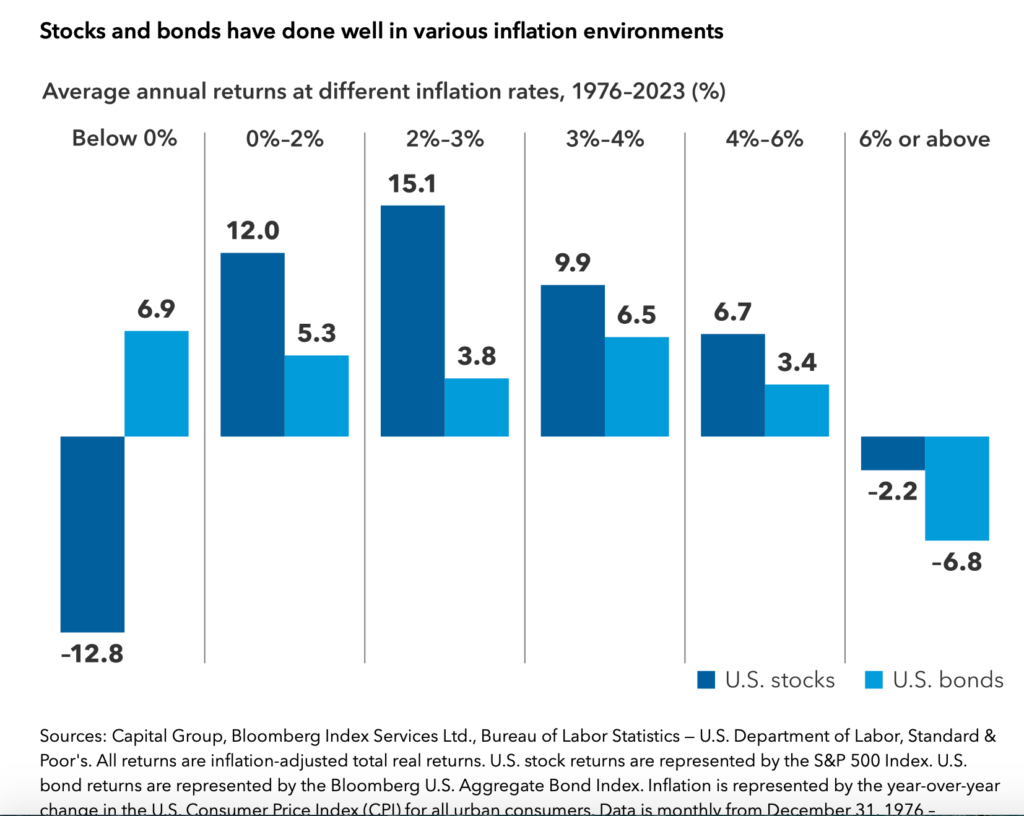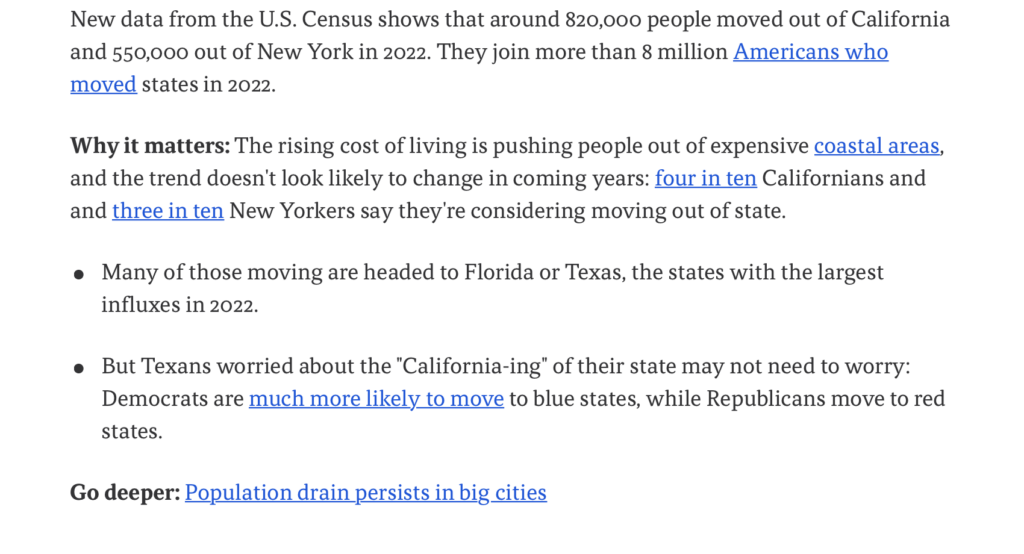1. Residential Real Estate 4x Larger than Commercial Real Estate…The American Dream has a Massive $44.5 Trillion Dollar Value.
From Bramshill InvestmentsInsights | Bramshill Investments

Home Barrons–equity accounts for almost half of the median net worth of homeowners 60 and older, according to a Vanguard analysis. The average retirement savings, meanwhile, is $223,000. Home equity can provide a meaningful addition to that—provided retirees can make an advantageous move. https://www.barrons.com/articles/rising-home-prices-retirees-2e917a5d?mod=past_editions
2. Small Cap at Summer 2018 Levels

3. Dividend Yield Poor Performer 2023.

4. Semiconductor ETF Hitting 200day
Barrons By Tae Kim–Of the 115,000 new jobs needed by the U.S. chip industry by 2030, some 67,000 jobs will go unfilled, according to the Semiconductor Industry Association. The U.S. trains foreigners in its world-class education system, but immigration policies make it difficult for U.S. companies to hire them.
Intel says foreign nationals make up more than 60% of advanced science, technology, engineering, and mathematics, or STEM, degree students at U.S. universities in the technical fields necessary for chip industry jobs. The company supports providing green cards to students who earn these advanced STEM degrees. https://www.barrons.com/articles/netflix-stock-price-hikes-password-crackdown-5176e57b?mod=past_editions

5. Historical Returns of Stocks and Bonds with Inflation.
Capital Group

6. Buybacks Trending Downward.
Chart Storm Callum Thomas Q4 is typically a stronger quarter in terms of buybacks, but it is notable that the recent trend has been down in terms of buyback announcements. Some of this will have to do with the cost pressures dampening margins last year, but especially also with borrowing costs now a lot higher — making it more difficult a calculus for firms to fund buybacks with debt.

Source: @WallStHorizon via Daily Chartbook and @MikeZaccardi
7. BMW -20% Correction

8. Homebuilders -17% from Highs

9. Top 10 Moves Between States
Axios


https://www.axios.com/2023/10/28/americans-moving-map-2022-florida-texas
10. The 5 Universal Truths of Anxiety
Psychology Today-What to know and what to do-Noelle McWard LCSW
In a previous post, “What is Your Anxiety Type?”, I described three types of anxiety, each with unique characteristics, ways in which anxiety seeks to remain in control when challenged, and solutions. Knowing your anxiety type can help you understand your anxiety in a new way, and to apply strategies best suited to address the underlying issue being expressed through your anxiety.
There are also five universal truths of anxiety, always present, regardless of your anxiety type. Within these universal truths lies important information to better understand the nature of anxiety and skills to practice when feeling anxious.
Anxiety is an innate biological response to perceived danger and serves the essential function of keeping you safe. It is controlled by the amygdala, a cluster of cells located in the most primitive part of the brain. The amygdala has one job: to look for signs of danger.
When danger is detected, the amygdala releases hormones, one of which becomes adrenaline. Adrenaline causes, amongst other things, increased heart rate, shallow breathing and stimulated sweat glands. These functions prepare your body to fight off or flee from danger by supplying your large muscles with fuel and energy. This is commonly known as the fight, flight or freeze response. When the amygdala is activated your mind hyperfocuses on the perceived danger, and blocks access to parts of your prefrontal cortex responsible for higher-level thinking and meaning making in order to focus your mental resources solely on your survival. This is responsible for the “irrational thinking” that often accompanies anxiety.
You likely recognize the physical symptoms of anxiety, caused by the physiological response to perceived danger. Anxiety impacts your emotional, cognitive and biological functioning. The five universal truths of anxiety address important facts for you to understand about all three impacts of anxiety.
1. Breathing is essential.
The physical symptoms of anxiety are the result of the physiologically aroused state triggered by the release of adrenaline into your system. When in a physiologically aroused anxiety state, the most effective way to calm the body’s biological response is through deep breathing. It is physiologically impossible for your body to remain in an aroused state while doing deep breathing.
There are a number of breathing patterns scientifically proven to calm the physiological arousal of anxiety. The key to effective breathing is a slow, prolonged exhale.
Two highly effective breathing patterns are the 4-7-8 technique and box breathing.
The 4-7-8 technique involves inhaling through your nose for the count of 4, holding your breath for the count of 7 and exhaling through pursed lips for the count of 8. Repeat this pattern for as long as is necessary to lower the physical symptoms of anxiety.
For box breathing, inhale for the count of 4, hold your breath for the count of 4, exhale for the count of 4 and then again hold your breath for the count of 4. Repeat this breathing pattern until you have achieved a state of calm.
2. Your mind can hold only one thought at a time.
While your thoughts may quickly jump from one thought to another, your mind can hold only one thought at a time. If it is focused on an anxiety provoking thought, such as “I am scared”, “This is terrible”, or “Something bad is going to happen” you will feel anxious. If your mind is focused on a neutral or calming thought, such as “I am safe”, “I can handle this”, or “I will figure this out”, you will feel calm or calmer. Therefore, focusing on neutral or calming thoughts will lower your anxiety.
Additionally, using calming strategies such as listening to music, podcasts, or guided meditations can help lower anxiety by giving your mind something soothing or positively distracting to engage with.
3. Avoidance is a common response to anxiety.
A nearly universal response to anxiety is to avoid the source of your anxiety. If you are anxious about not having enough money, you may avoid looking at your bank account. If you fear having a difficult conversation you may avoid it. While the impulse to do this is understandable, it never helps. Avoidance is nothing more than prolonged suffering disguised as safety. At best it heightens your anxiety and at worst it turns a feared outcome into a real problem.
article continues after advertisement
The only way through anxiety is to step into it. You cannot overcome anxiety from a distance. You must step into the thing that makes you anxious and tolerate the resulting discomfort to get to the other side of it.
To differentiate distraction from avoidance, avoidance is to hide from the source of your anxiety. Distraction is a tool you can utilize when stepping into your anxiety to help you tolerate the discomfort you will inevitably feel. If you are afraid of flying, avoidance would be to never fly. Distraction would be to use soothing mantras and listening to podcasts while flying to lessen and better tolerate your anxious feelings. The fear of flying, like all anxiety, can only be overcome by exposing yourself to the thing you fear.
4. In emotionally charged situations, your mind will make up stories. The stories will rarely reflect the truth.
The human mind is uncomfortable with uncertainty. It constantly makes up stories in a futile effort to know the unknown. When you are in an emotionally charged situation, around the things you do not know (what someone else is thinking, feeling or why they are behaving in a way you can observe) your mind will make up a story to fill in the blanks. The story will be a reflection of your greatest fear or vulnerability. And it will almost never be an accurate reflection of what is true.
The distress you feel will likely come more from the story your mind has created than from the facts you know in any given situation. When in an emotionally charged situation, around the distress you are feeling, check to see if your distress is based in fact, or the story you have created. Refocus your thoughts and energy only on what you know to be true.
5. There is a constant interplay between thoughts, feelings and behavior. Feelings are always the last to change.
At all times, there is an interplay between your thoughts, feelings and behaviors; each influencing the others. Feelings are always the most powerful. Changing one will change the other two. While you can choose your thoughts and behaviors, you cannot as easily choose your feelings. Feelings do not work that way. When has it ever been helpful to be told, “Just don’t feel that way?” or “Why don’t you feel this way instead?”
When seeking to change your feelings, you must first change your thoughts and actions. You will have to do so while still feeling your uncomfortable feelings. You cannot wait for the feelings to change first. But know that by changing your thoughts and actions to align with the desired feeling, the feeling will follow.
https://www.psychologytoday.com/us/blog/unpacking-anxiety/202310/the-5-universal-truths-of-anxiety